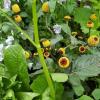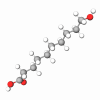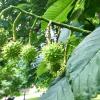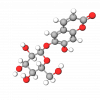Echinacea, also known by the name Purple coneflower, is a perennial flowering plant native to Central and Mid-South West America. There are many different species of Echinacea; however, three varieties are used for herbal remedies. They are: E. Angustifolia; E. Pallida, and the most widely used is E. Purpurea.
Although Echinacea plants can be found growing wild on the prairies of Midwest America, commercial cultivation has been developed to keep up with world supplies. The main part of the plant used for herbal medicine is the root, harvested when the plant is 3+ years old. The roots are then dried and ground into a powder or grated into smaller pieces. It has an aromatic odor, and the taste is initially sweet then followed by bitterness and a tingling sensation on the tongue.
The Native American Indians used Echinacea more than any other plant for medicinal purposes. It was also widely used in modern American medicine in the early 20th Century and used extensively by the Europeans since the 1930s.
Purple coneflower leaves antiseptic, anti-viral, and anti-inflammatory effects that may make it useful in the treatment of such conditions as infected tonsils, abscesses, colds, flu. It's also helpful to treat wounds and other skin infections such as boils, carbuncles, abscesses, and inflammatory skin conditions like eczema and psoriasis.This natural extract is a certified organic ingredient that stimulates the body's immune system. In addition, it is used as a preservative to rid microbial bacteria. Echinacea Extract is suitable for mild conditions such as dehydrated skin.











